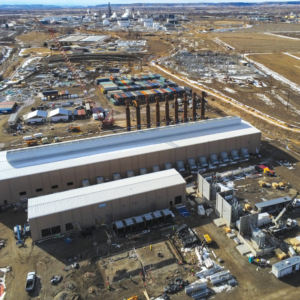Newly Licensed Businesses June 2023
Stillwater Machine LLC, 2931 Stillwater Dr, 59102, 579-3387, Jake Johnston, service
G Bell LLC, 14 E Almadin Ln, 59105, 208-4693, Gard Bell, service
Avis Budget Car Rental LLC, 1801 Terminal Circle, 59105, 973-496-4700, Jeannine Pallumbo, service
BD Equipment Services Inc, 4712 Rimrock Rd, 59106, 201-7711, Bill Beede, service
CORE Volleyball Academy, 3465 AJ Way – Unit 111, 59106, 201-9585, Ran Dee Ochinero, service
Cobblestone Landscaping LLC, 1480 Uniontown Rd, Genesse ID 83832, Jake Osborne, service
Totally Whipped, 2144 Eagle Rock Dr, 59101, 647-5971, Kenneth Weher, restaurants
LKeller Photography, 3360 Hidalgo Dr, 59101, 698-9233, Laurena Keller, service
Flow Riders LLC, 3819 Drury Ln, 59105, 901-3270, Jami DeHaven, service
Candy King Group Corp., 11100 Valley Blvd #220, El Monte CA 91731, Jian Liu, restaurants
The Frybread House LLC, 1503 Rosebud Ln, 59101, 672-9388, Leonard Cochran, restaurants
Custers Retreat, 1043 Custer Ave, 59102, 625-0002, Matt McAlvain, real estate rental
360 Pressure Washing, 139 Terry Ave, 59101, 413-1125, Christina McCulley, service
Ross Construction, 6 Walnut Grove Dr, 59102, 894-3797, Arron Ross, general contractor
Bluecore Power LLC, 2001 Sixth Ave – Ste 1776, Seattle WA 98121, 206-201-0300, Sandra Blackburn, electrical contractors
Piece O’Cake, 2160 Skyview Dr, 927-4515, Kristina Morton, retail sales
Rubies and The Fig Trees, 933 Edgehill Vista Rd, 59101, 679-3642, Sarah Hosa, retail sales
CWI, LLC dba Camping World, 976 Rosebud Ln, 59101, 270-781-2718, Donita Kirby, retail sales
Tam3 Consulting LLC, 2626 Cook Ave, 59102, Thorton McGill, service
PG Marketing LLC, 3217 E MacDonald Dr, 59102, 697-1391, Perrin Grubbs
Inspire Medical Systems Inc, 5500 Wayzata Blvd – Ste 1600, Golden Valley MN 55416, 612-670-8772, Marc Ertl, retail sales
3 Kings Excavation & Asphalt LLP, 745 Henesta Dr, 59101, 696-8393, Justin & Jessica Bickham/John Hankinson, service
Uncle Josh’s Smoke Shack, 5179 Midland Rd, 59101, 763-244-0321, Joshua Nestrud/Heather Ackerman, restaurants
Big Sky Costume Jewelry, 5305 Sundance Mountain Circle, 59106, 432-294-4142, Liliana Harris, service
HP Communications Inc, 13341 Temescal Canyon Rd, Corona CA 92883, 951-572-1200, Marisa Eventes, service
Zeren Electric LLC, 2050 Hwy 91 North, Dillon MT 59725, 498-4509, Ryan Zeren, electrical contractors
Casablanca International Consultations, 816 Rock Moss Dr, 59101, 591-5615, Bailey Brown, service
Tellworks Communications LLC, 415 N 16th St, 59101, 550-3204, Shanon Ruff, service
JI Hot Dogs Pizza and More, 2719 1st Ave N, 59101, 425-3091, JoJo Tobias, restaurants
Decks Gone Wild LLC, 3050 Helen Dr, 59101, 670-4862, Tory Nick, general contractor
LNS Rentals, 388 Sahara Dr, 59105, 916-8380, Tamari Rutledge, real estate rentals
The Daily Crunch Bookkeeping Services, 2451 Bonito LP, 59105, 775-455-6783, Jill Detwiler, service
Nevada Countertops Supply LLC, 3251 E Warm Springs RD – Ste 400, Las Vegas NV 89120, service
JPW Brick Slayer, 24 S 8th St W, 59101, 690-9362, Jeremy Pretty Weasel, service
Cerus Enterprises LLC, 3755 West Accipter Dr, Coeur D’Alene ID 83815, 208-503-5333, Joshua Fledderman, general contractor
DHB, 526 Burlington Ave, 59101, 901-0801, David Hill, general contractor
Shimmering Heights, 501 S 44th St W #1106, 59106, 925-3661, Caleb Mills, service
Deanna Young LMT, 2116 Broadwater Ave, 59102, 598-1804, Deanna Young, service
Your Home Away from Home II (2), 1228 Maurine St, 59105, 534-3511, Jessica Robinson, service
Blue Heron Construction, 2311 Kings Dr, 59101, 927-3650, Simon Harris, general contractor
Lukas Rentals, 1026 Nutter Blvd, 59105, 655-4445, Lukas Martinson, real estate rental
Grey Finn LLC, 2311 Spruce St, 59101, 600-1117, Daniel Faaborg, real estate rental
Skyline Heights Nursing and Rehabilitation, 1807 24th St W, 59102, 801-601-1450, Rachel Winder, service
Petco #1299, 2618 King Ave W, 59102, 210-201-9387, n/a retail sales
MK Mechanical LLC, 8732 Suzanna Dr, 59101, 208-3234, Matthew Kottke, services
The Shear Shack LLC, 1350 Panners Pl Apt J, 59105, 307-899-4750, Danielle Uchtman, service
AJC Properties, 1521 Lewis Ave, 59102, 694-5951, Asa Campbell, real estate rental
Dick Zier Brokerage Inc, 2139 Broadwater Ave – Ste F, 59102, 698-3153, Alex Zier, service
Elevate Solar, 425 S 2nd ST, Livingston 59047, 704-305-5919, Ben Caylor, service
Alikat Kleaning, 3912 Victory Circle #136, 59102, 598-1988, Alison James, service
Bad Canyon Excavation and Construction, 2205 58th St W, 59106, 647-1000, general contractor
Anyway Energy LLC, 3221 110K Ave SW, , Dickenson ND 58601, 701-495-1161, Darcy Schmidt, service
EC MT Customs, 4340 Phillip St, 59101, 860-6746, Elizabeth Chaffin, retail sales
Rise Above Cleaning LLC, 620 W Main St #3, Laurel 59044, 927-2193, Melissa Emery, service
Continental Cleaning Company LLC, 825 Ahoy Ave, 59105, 671-6902, Vicki Eubank/Mark Engeron, service
City Blue Productions LLP, 2049 Interlachen Dr, 59105, 670-2329, Pam Goodridge, service
Goodgulf Consulting, 3075 Winchester Trail, 59106, 672-5099, James Leaphart, service
Jones Covey Group, 9595 Lucas Ranch Rd, Rancho Cucamonga CA 91730, 888-972-7581, Ellen Collins, general contractor
Leonardson Inc, 3006 17th St W, 59102, 606-9357, Scott Leonardson, general contractor
Nathan Clouse Construction, 404 South Moorehead, Miles City 59301, 853-3522, Nathan Clouse, general contractor
Branded Construction, 516 9th St W, 59102, 697-0378, Kumba Gould, service
804 Clark LLC, 804 Clark, 59101, 208-6407, Rachel Moorehead, real estate rental
TCA Group Inc, 2223 Montana Ave, 59101, 442-8594, Amy Strainer, general contractor
Nations Roof Mountain LLC, 10621 W Executive Dr, Boise ID 83713, 208-322-2474, Kent Tolley, general contractor
Absarokee Development LLC, 1110 Poly Dr, 59102, Glenn Plenty Hawk, restaurants
The Cleaning Edge, 120 S 35th St, 59101, 839-6892, Tiphani Stambaugh, service
A’s and B’s preschool, LLC, 1536 Mullowney Ln Ste 201, 59101, 855-6833, n/a, schools
Elan Medspa LLC, 1537 41st W, 59102, 855-4002, Kaciey Tisdale, services
Big Sky Marine Sales LLC, 2561 Monad Rd, 59102, 633-0456, Jaymi Rooyen, retail sales
MAKK LLC, 1030 Yale Ave, 59102, 869-4180, Kevin Kraft, 869-4180, real estate rental
MC Concrete Lifting, 2252 Ave C, 59102, 970-4098, Caleb Borgstrom, general contractor
Balance & Bloom LLC (Healing), 1721 Wicks Ln, 59105, 598-7748, Amber Emmons, service
Balance & Bloom LLC (Retail), 1721 Wicks Ln. 59105, 598-7748, Amber Emmons, retail sales
Princeton Street Charmer Airbnb, 661 Tumbleweed Dr, 59105, 694-7475, Cheryl and Brian Emmons, real estate rental
Zomi Inc, 515 Leopard St, 59106, 850-3855, Gideon Holmes, service
Beacon Air Group, 2390 Overlook Dr, 59105, 800-700-5107, Joel Simmons, service
Blue Elk Advisors LLC, 434 Calle Gomez, San Clemente CA 92672, 949-838-4807, James Chalmers, service
Chaikhana, 300 S 24th St W #D03, 59102, 304-8987, Sadi Chaikhana, restaurants




